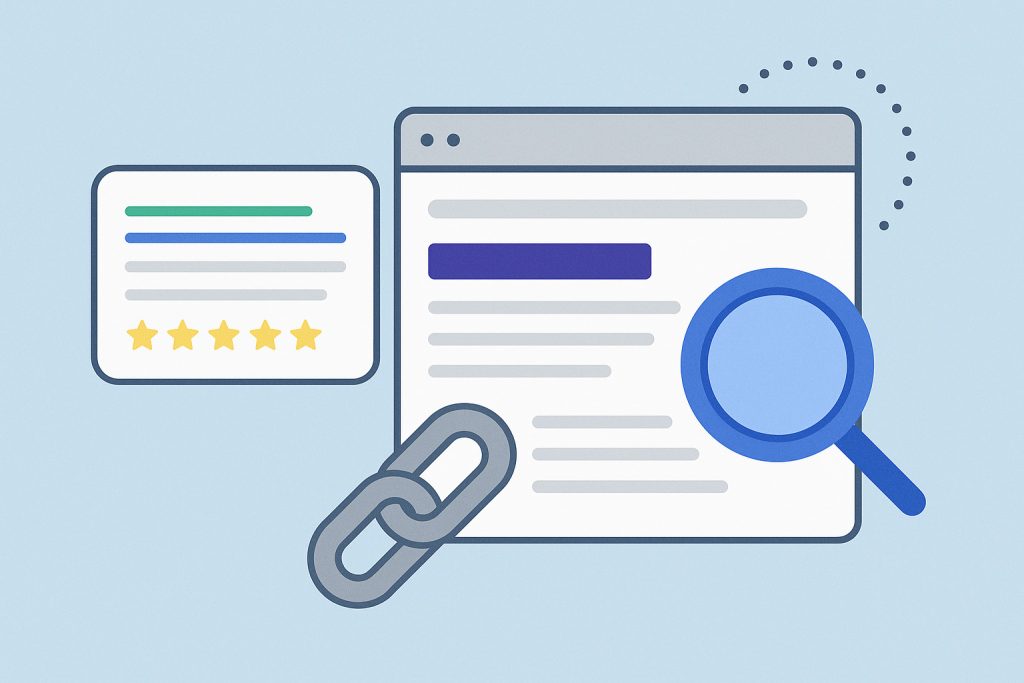Conducting a comprehensive SEO audit is essential for evaluating the effectiveness of your website’s search engine optimization strategy and ensuring adherence to SEO best practices. An SEO audit helps identify issues, opportunities for improvement, and areas where your site can gain better visibility and ranking. Here’s a step-by-step guide to performing a thorough SEO audit.
1. Review Website Performance
Start by assessing the overall performance of your website, focusing on speed and user experience.
- Site Speed: Use tools like Google PageSpeed Insights or GTmetrix to evaluate your site’s loading times. Slow-loading pages can negatively impact user experience and search rankings.
- Mobile Friendliness: Check if your site is mobile-friendly using Google’s Mobile-Friendly Test. Ensure that your site offers a seamless experience across all devices.
- Core Web Vitals: Assess Core Web Vitals (loading performance, interactivity, and visual stability) to understand how well your site performs from a user experience perspective.
2. Analyze On-Page SEO Elements
Examine key on-page SEO elements to ensure they are optimized for both users and search engines, as effective on-page SEO optimization is crucial for visibility.
- Title Tags: Verify that each page has a unique and descriptive title tag, ideally including relevant keywords.
- Meta Descriptions: Check if meta descriptions are present and compelling, encouraging users to click through to your site from search results.
- Headings: Ensure that headings (H1, H2, H3, etc.) are used properly to structure your content and include relevant keywords.
- Content Quality: Assess the quality and relevance of your content. Ensure it is engaging, well-written, and optimized for targeted keywords.
3. Evaluate Technical SEO Aspects
Technical SEO is critical for search engines to crawl and index your site effectively.
- XML Sitemap: Confirm that your XML sitemap is up-to-date and submitted to search engines. It should include all important pages of your site.
- Robots.txt: Check your robots.txt file to ensure it is not blocking important pages from being crawled by search engines.
- URL Structure: Review your URL structure for clarity and keyword relevance. Avoid long, complex URLs and ensure they are user-friendly.
- Canonical Tags: Verify the use of canonical tags to prevent duplicate content issues by indicating the preferred version of a page.
4. Check for Broken Links
Broken links can harm user experience and SEO performance.
- Internal Links: Use tools like Screaming Frog or Ahrefs to identify and fix broken internal links on your site.
- External Links: Check for broken external links pointing to your site and update or remove them as necessary.
5. Assess Backlink Profile
Evaluate your site’s backlink profile to understand its authority and identify potential issues.
- Backlink Quality: Use tools like Ahrefs or Moz to analyze the quality and relevance of backlinks pointing to your site. Focus on acquiring high-quality, authoritative backlinks.
- Toxic Links: Identify and disavow any toxic or low-quality backlinks that could negatively impact your SEO.
6. Review Competitor Analysis
Understanding your competitors’ strategies can provide insights for your own SEO efforts.
- Competitor Research: Analyze your competitors’ websites to identify their strengths and weaknesses. Use tools like SEMrush or SpyFu to gather data on their keywords and backlink profiles.
- Gap Analysis: Identify keyword and content gaps between your site and your competitors. Look for opportunities to target new keywords and improve your content strategy.
7. Evaluate Local SEO Factors
For businesses targeting local customers, local SEO is crucial.
- Google My Business: Ensure your Google My Business listing is complete, accurate, and optimized with relevant information, images, and customer reviews.
- Local Citations: Verify that your business is listed consistently across local directories and review sites.
8. Analyze User Behavior and Engagement
Understanding user behavior can provide insights into your site’s performance and areas for improvement.
- Analytics Data: Use Google Analytics to analyze user behavior metrics such as bounce rate, average session duration, and pages per session. Identify any areas where users may be experiencing issues or dropping off.
- Conversion Tracking: Set up and monitor conversion goals to assess how well your site is driving desired actions, such as form submissions or product purchases.
9. Review Site Security
Site security is important for both user trust and search engine rankings.
- HTTPS: Ensure that your site uses HTTPS to provide a secure connection for users.
- Security Vulnerabilities: Check for any security vulnerabilities or issues that could affect your site’s performance and reputation.
10. Develop an Action Plan
Based on your findings, create a detailed action plan to address the issues and opportunities identified during the audit.
- Prioritize Issues: List the issues in order of priority, focusing on those that have the most significant impact on your SEO performance.
- Set Goals: Define clear goals and metrics for improvement, and allocate resources to implement the necessary changes.
- Monitor Progress: Regularly monitor the results of your SEO efforts and adjust your strategy as needed to ensure continued improvement.
Conclusion
A comprehensive SEO audit provides valuable insights into your website’s performance and areas for improvement. By following these steps and addressing key aspects such as site performance, on-page SEO, technical SEO, and user behavior, you can enhance your site’s search visibility and overall effectiveness. Regular audits will help you stay ahead of the competition and adapt to evolving SEO trends and best practices.






